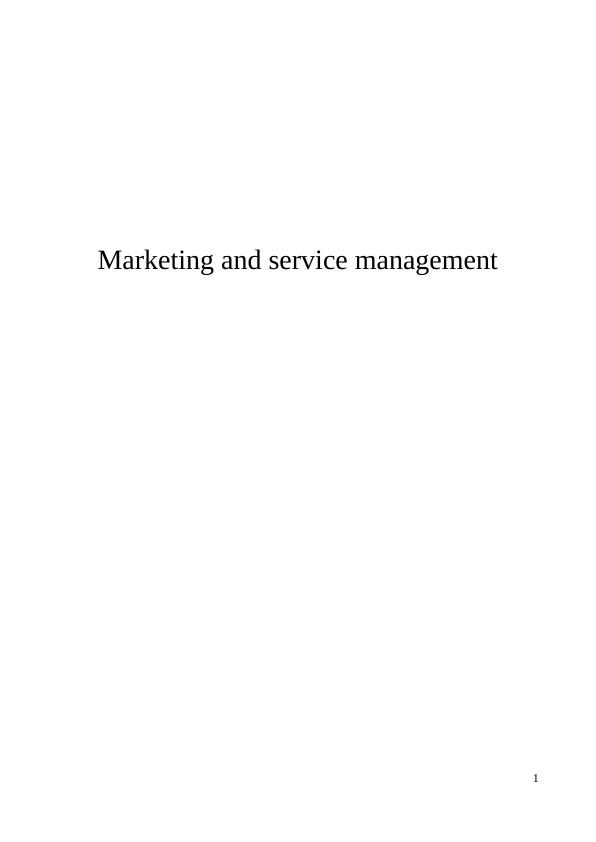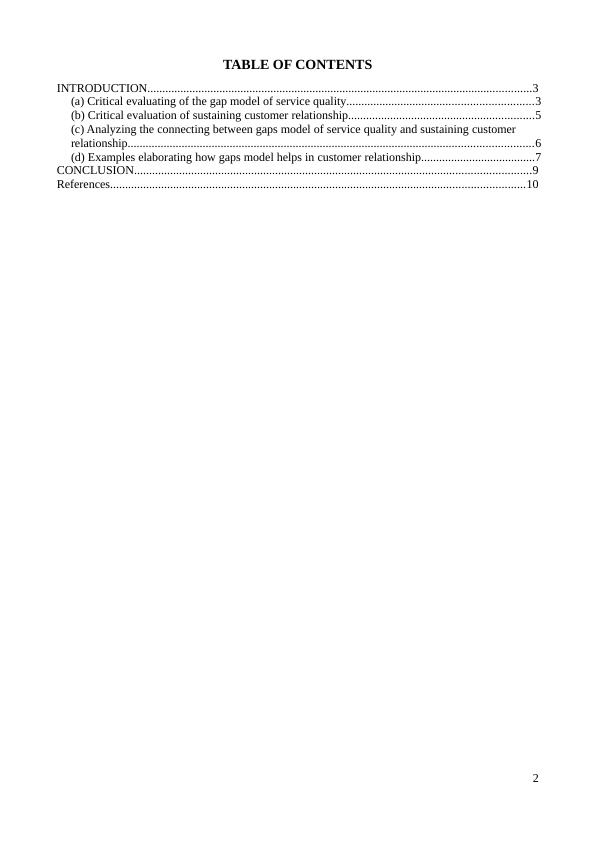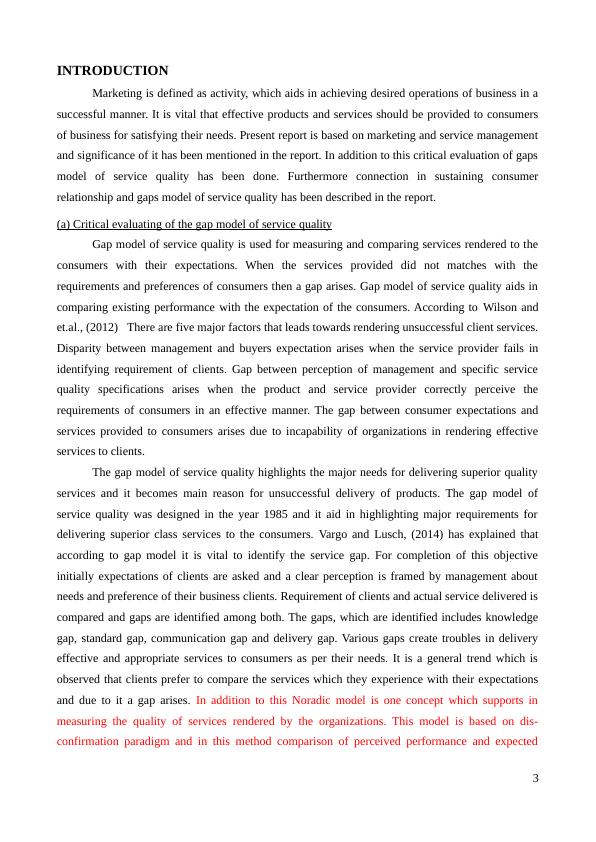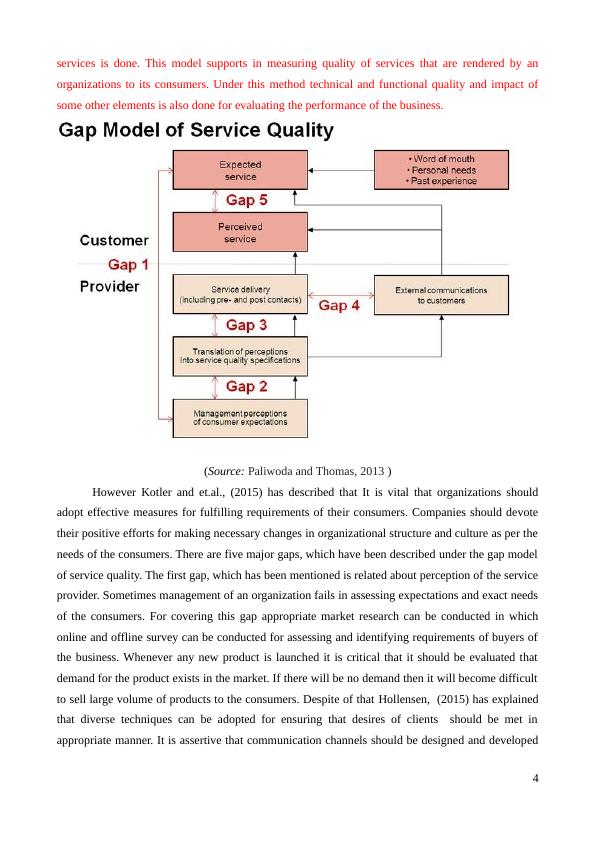Marketing and Service Management TABLE OF CONTENTS
Added on 2020-01-23
12 Pages4238 Words387 Views
Marketing and service management1

TABLE OF CONTENTSINTRODUCTION................................................................................................................................3(a) Critical evaluating of the gap model of service quality..............................................................3(b) Critical evaluation of sustaining customer relationship..............................................................5(c) Analyzing the connecting between gaps model of service quality and sustaining customer relationship.......................................................................................................................................6(d) Examples elaborating how gaps model helps in customer relationship......................................7CONCLUSION....................................................................................................................................9References..........................................................................................................................................102

INTRODUCTION Marketing is defined as activity, which aids in achieving desired operations of business in asuccessful manner. It is vital that effective products and services should be provided to consumersof business for satisfying their needs. Present report is based on marketing and service managementand significance of it has been mentioned in the report. In addition to this critical evaluation of gapsmodel of service quality has been done. Furthermore connection in sustaining consumerrelationship and gaps model of service quality has been described in the report. (a) Critical evaluating of the gap model of service qualityGap model of service quality is used for measuring and comparing services rendered to theconsumers with their expectations. When the services provided did not matches with therequirements and preferences of consumers then a gap arises. Gap model of service quality aids incomparing existing performance with the expectation of the consumers. According to Wilson andet.al., (2012) There are five major factors that leads towards rendering unsuccessful client services.Disparity between management and buyers expectation arises when the service provider fails inidentifying requirement of clients. Gap between perception of management and specific servicequality specifications arises when the product and service provider correctly perceive therequirements of consumers in an effective manner. The gap between consumer expectations andservices provided to consumers arises due to incapability of organizations in rendering effectiveservices to clients. The gap model of service quality highlights the major needs for delivering superior qualityservices and it becomes main reason for unsuccessful delivery of products. The gap model ofservice quality was designed in the year 1985 and it aid in highlighting major requirements fordelivering superior class services to the consumers. Vargo and Lusch, (2014) has explained thataccording to gap model it is vital to identify the service gap. For completion of this objectiveinitially expectations of clients are asked and a clear perception is framed by management aboutneeds and preference of their business clients. Requirement of clients and actual service delivered iscompared and gaps are identified among both. The gaps, which are identified includes knowledgegap, standard gap, communication gap and delivery gap. Various gaps create troubles in deliveryeffective and appropriate services to consumers as per their needs. It is a general trend which isobserved that clients prefer to compare the services which they experience with their expectationsand due to it a gap arises. In addition to this Noradic model is one concept which supports inmeasuring the quality of services rendered by the organizations. This model is based on dis-confirmation paradigm and in this method comparison of perceived performance and expected3

services is done. This model supports in measuring quality of services that are rendered by anorganizations to its consumers. Under this method technical and functional quality and impact ofsome other elements is also done for evaluating the performance of the business. (Source: Paliwoda and Thomas, 2013)However Kotler and et.al., (2015) has described that It is vital that organizations shouldadopt effective measures for fulfilling requirements of their consumers. Companies should devotetheir positive efforts for making necessary changes in organizational structure and culture as per theneeds of the consumers. There are five major gaps, which have been described under the gap modelof service quality. The first gap, which has been mentioned is related about perception of the serviceprovider. Sometimes management of an organization fails in assessing expectations and exact needsof the consumers. For covering this gap appropriate market research can be conducted in whichonline and offline survey can be conducted for assessing and identifying requirements of buyers ofthe business. Whenever any new product is launched it is critical that it should be evaluated thatdemand for the product exists in the market. If there will be no demand then it will become difficultto sell large volume of products to the consumers. Despite of that Hollensen, (2015) has explainedthat diverse techniques can be adopted for ensuring that desires of clients should be met inappropriate manner. It is assertive that communication channels should be designed and developed4

End of preview
Want to access all the pages? Upload your documents or become a member.
Related Documents
Managing Service Deliverylg...
|7
|914
|105
Hotel Service Provision and Quality Managementlg...
|10
|2717
|55
Marketing and Services Management Report 2022lg...
|14
|3861
|17
Customer Service in Hospitality Industry: SERVQUAL Model, Acid Tests of Service Recovery, and Survey Reportlg...
|9
|3023
|287
Analysis of Service Marketinglg...
|6
|1349
|271
Analyzing the Service Gap Model of an Organizationlg...
|14
|2669
|434
